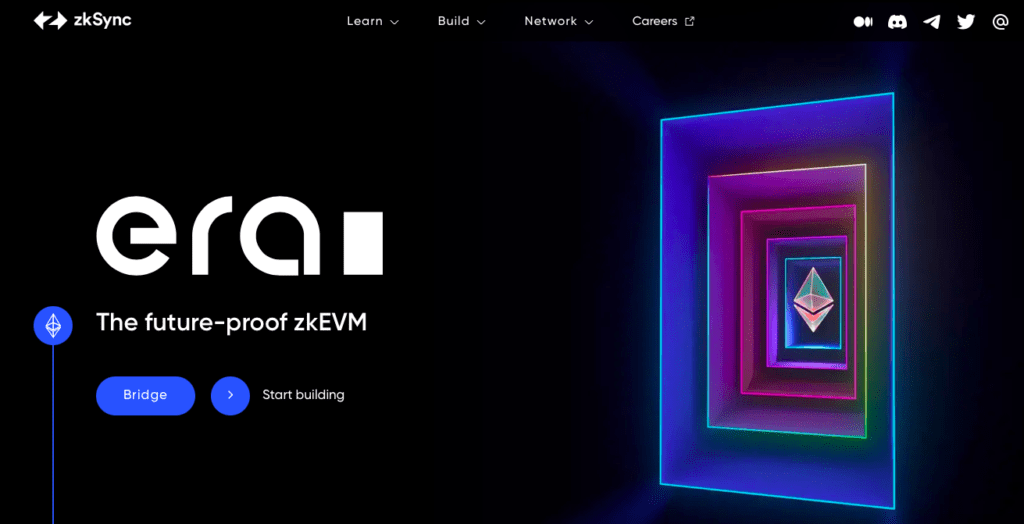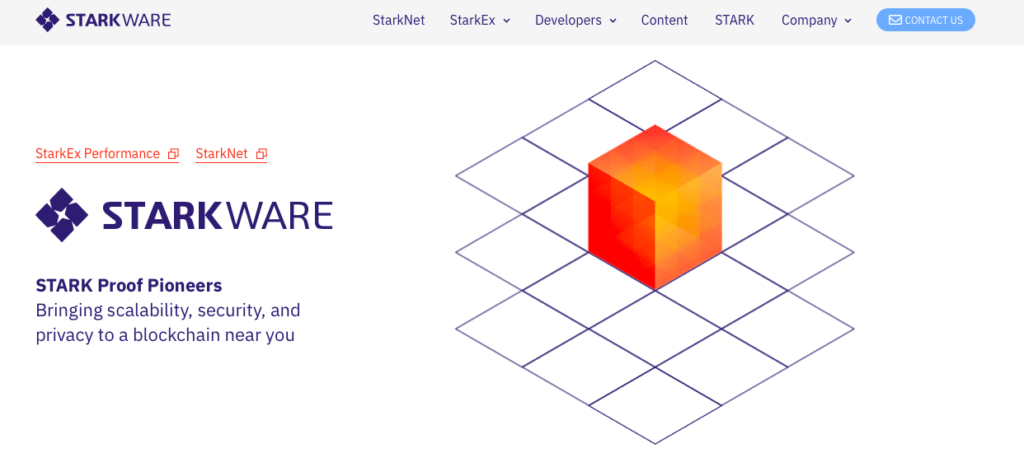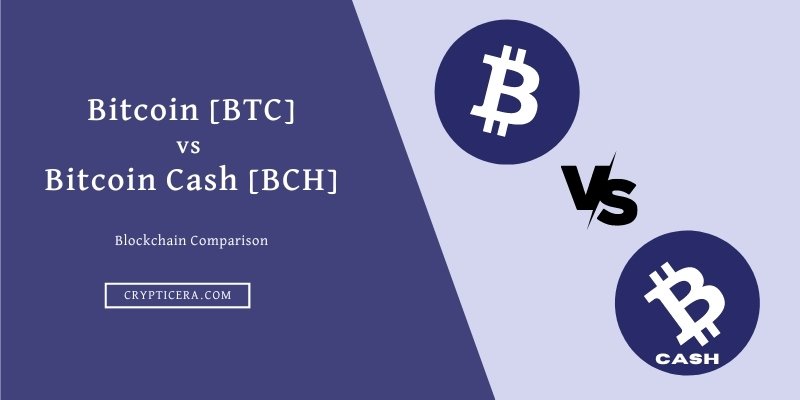As the popularity of blockchain grows, so does the need for scalable and efficient solutions to overcome its inherent limitations, such as slow transaction times and high fees.
This has led to the emergence of Layer-2 solutions, which aim to improve the performance and usability of Ethereum networks. Two prominent players in the Layer-2 space are zkSync and StarkWare, each offering unique features and benefits.
In this article, we will explore the differences between “zkSync vs StarkWare“, and their potential use cases in various industries.
Are you confused between StarkWare, StarkNet, and StarkEx? Let’s compare them first,
- StarkWare: StarkWare is a technology company that specializes in developing solutions for scaling blockchains using zero-knowledge proofs.
- StarkNet: StarkNet is a decentralized Layer 2 platform developed by StarkWare. It aims to provide scalability and privacy to Ethereum and other blockchains by using STARKs.
- StarkEx: StarkEx is a non-custodial Layer 2 decentralized exchange protocol developed by StarkWare.
zkSync vs StarkWare: Technical Differences
zkSync and StarkWare are both Layer-2 solutions that aim to enhance Ethereum scalability, but they differ in their underlying technologies.
zkSync is based on zero-knowledge proofs (zk-SNARKs), a cryptographic technique that allows for the verification of data without revealing the data itself. This enables zkSync to achieve high levels of privacy and security while reducing the need for on-chain transactions.
On the other hand, StarkWare utilizes zk-STARKs (Scalable Transparent Argument of Knowledge), a different form of zero-knowledge proofs that enables off-chain computation and verification, resulting in faster transaction times and lower gas fees compared to zkSync.
Comparison between zkSync and StarkWare
| Point | zkSync | Starkware |
|---|---|---|
| Technology | Zero-knowledge rollup | STARK-based rollup |
| Scalability | High throughput (up to 2,000 TPS) | High throughput (up to 9,000 TPS) |
| Security | Uses zkSNARKs for cryptographic proofs | Uses STARKs for cryptographic proofs |
| Transaction Cost | Low transaction fees | Low transaction fees |
| Decentralization | Fully decentralized | Fully decentralized |
| Smart Contract Support | Supports EVM-compatible smart contracts | Supports custom STARK-based smart contracts |
| EVM Compatible | Yes | No |
Must Read:
What are zkSync and StarkWare?
zkSync

zkSync is a layer 2 scaling solution that uses zero-knowledge proofs to verify transactions off-chain. It was developed by Matter Labs, a team of cryptography and system design experts.
zkSync uses rollups, which are smart contracts that aggregate and bundle transactions before submitting them to the Ethereum network. By doing so, zkSync significantly reduces gas fees and increases the transaction throughput of Ethereum.
StarkWare

StarkWare is another layer 2 scaling solution that uses zk-STARKs, a type of zero-knowledge proof, to verify transactions off-chain.
StarkWare’s solution is based on Validium, which is a hybrid solution that combines the benefits of optimistic rollups and zk-rollups. It can handle up to 9,000 transactions per second and can settle transactions in as little as one second.
zkSync and StarkWare: How do they compare?
Performance [TPS]
In terms of performance, both zkSync and StarkNet are impressive. zkSync can handle up to 2,000 transactions per second, while StarkWare can handle up to 9,000 transactions per second.
However, it’s important to note that these numbers are theoretical maximums and real-world performance may differ.
Network Security
When it comes to security, both “zkSync vs StarkWare” are highly secure due to their use of zero-knowledge proofs. However, there is a slight difference in how they achieve security.
zkSync’s use of zk-SNARKs for transaction verification may make it more vulnerable to certain types of attacks. However, the team at Matter Labs has implemented several measures to mitigate these vulnerabilities, and zkSync has not experienced any major security breaches to date.
What specific types of vulnerabilities are being referred to? While zk-SNARKs are a powerful and secure method of verification, there are certain types of attacks that may be more effective against zk-SNARKs compared to other zero-knowledge-proof systems.
One such attack is a “birthday attack,” which involves creating multiple fraudulent transactions that have the same zk-SNARK proof. Because zk-SNARKs are deterministic, a malicious actor could potentially create multiple transactions with the same proof and then attempt to use them to double-spend funds.
While this type of attack is difficult to pull off in practice, it’s still a theoretical vulnerability that could potentially be exploited.
Another potential vulnerability with zk-SNARKs is related to the underlying cryptography. The security of zk-SNARKs relies on the assumption that the Elliptic Curve Discrete Logarithm Problem (ECDLP) is hard to solve.
However, if an attacker were to discover a way to solve the ECDLP more efficiently than is currently known, then the security of zk-SNARKs would be compromised.
On the other hand, StarkWare’s use of zk-STARKs is generally considered to be more transparent and easier to audit. This transparency makes it less likely that there are unknown security vulnerabilities that could be exploited.
However, as with any new technology, there is always the possibility of unknown security risks emerging in the future.
Ethereum Virtual Machine [EVM] Compatibility
zkSync is designed to be fully EVM-compatible [also known as zkEVM], meaning that it supports all existing Ethereum smart contracts and tools.
This makes it easy for developers to port their existing applications onto the zkSync platform without making significant changes to their codebase.
In addition, because zkSync uses the same programming language as Ethereum (Solidity and Vyper), developers can use the same development tools and libraries that they are already familiar with.
StarkWare, on the other hand, offers an EVM-compatible solution through its StarkEx platform. However, StarkEx uses a different programming language than Ethereum (Cairo).
This means that developers will need to learn a new language and use different development tools to build on the StarkEx platform. While this may be a barrier to entry for some developers, StarkEx’s use of Cairo enables it to achieve greater scalability and performance than zkSync.
zkSync vs StarkNet: Ecosystem, DApps, and TVL

zkSync Era Total Value Locked (TVL): zkSync has gained significant traction in terms of Total Value Locked (TVL) on its platform. According to Defillama, the TVL on zkSync exceeded $113 million, making it one of the leading Layer-2 solutions in terms of TVL.
Many popular projects have integrated with zkSync to leverage its Layer-2 scaling capabilities. Some of the notable projects SyncSwap and Velocore.

StarkNet’s TVL stands at around $6.6 million, showcasing its growing popularity among developers and users alike.
StarkNet is relatively newer compared to zkSync and is still in its early stages of development. While it has gained attention in the Ethereum community, its ecosystem is not as mature as zkSync.
Notable projects that have expressed interest in StarkNet include dYdX, Perpetual Protocol, and Golem, among others.
What is Zero-Knowledge Proofs?
Zero-Knowledge Proofs (ZKPs) is a revolutionary concept in cryptography. They allow for the verification of a statement without revealing any information about that statement.
ZKPs involve a prover and a verifier. The prover wants to prove a statement to the verifier, while the verifier wants to confirm the truthfulness of the statement without gaining any additional information from the prover.
ZKPs also have potential applications in online authentication, digital identity verification, and data privacy. They can authenticate users without revealing their credentials, or verify data integrity without exposing the actual data.
Read: What is Polygon zkEVM?
zkSNARKs vs zkSTARKs
As we discussed earlier, zkSync uses SNARKs, whereas, StarkWare uses STARKs. let’s compare these two technologies and how they differ-
| Point of Comparison | zkSNARKs | zkSTARKs |
|---|---|---|
| Trust Assumptions | Trusted setup | No trusted setup |
| Scalability | Less scalable due to larger proof sizes | More scalable due to smaller proof sizes |
| Proof Generation | Requires significant computational resources | Limited interoperability with other zero-knowledge-proof systems |
| Cryptographic Assumptions | Based on elliptic curve cryptography | Based on algebraic-geometric codes |
| Succinctness | More concise proofs | Less concise proofs |
| Security Assumptions | Relies on the knowledge-of-exponent assumption | Requires fewer computational resources |
| Interoperability | Limited interoperability with other zero-knowledge-proof systems | Limited interoperability with other zero-knowledge proof systems |
For better understanding, Read Full Guide: Difference between STARKs and SNARKs
Optimistic Rollups vs zk-Rullups
Optimistic Rollups take an optimistic approach, assuming that most transactions will be processed correctly and any incorrect transactions can be challenged and corrected later.
On the other hand, zk-Rollups take a more secure and privacy-centric approach. They use zero-knowledge proofs (zk-proofs) to verify the correctness of transactions without revealing the underlying data.
Transactions are bundled off-chain, and a zk-proof is submitted to the main blockchain to demonstrate the correctness of the entire batch.
The strong cryptographic guarantees of transaction correctness and privacy make zk-Rollups more secure compared to Optimistic Rollups.
However, they can be more complex to implement and may have limitations in supporting certain types of smart contracts or dApps that require complex computations.
Read More: Comparison between Optimistic Rollups and zk-Rollups
Final Thoughts: Which is better?
In Summary, zkSync vs StarkWare, Which should you choose? zkSync is a good choice for applications that prioritize fast and low-cost transfers, while StarkNet may be more suitable for projects that require flexibility and versatility in terms of smart contract capabilities.
When it comes to Security, user experience, and adoption, zkSync has a slight edge. Its user-friendly interface and partnership with various DeFi projects including Immutable X make it an attractive option for Ethereum users.
Related: zkSync vs Polygon zkEVM


